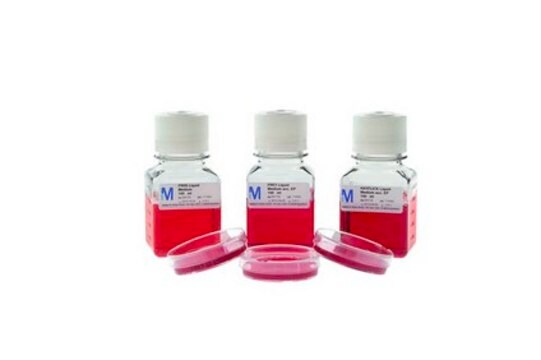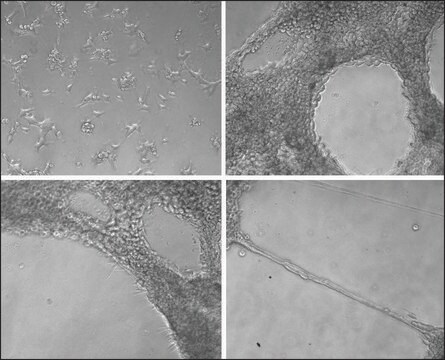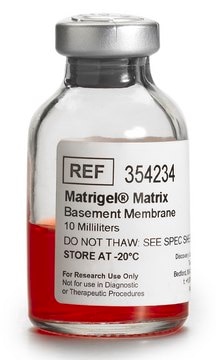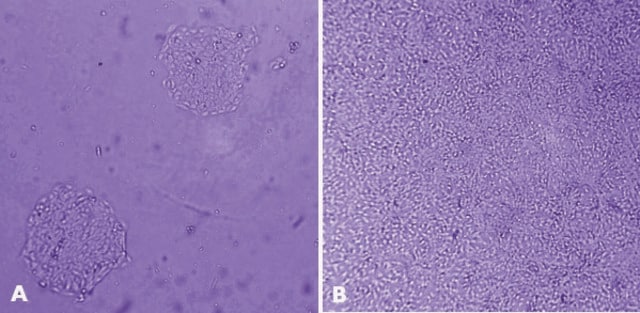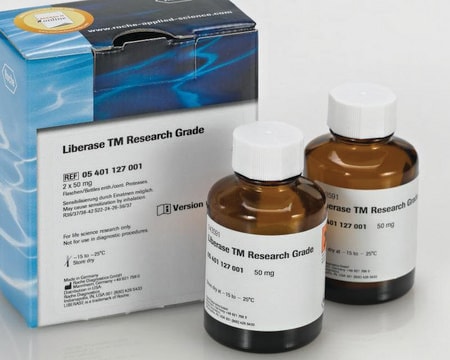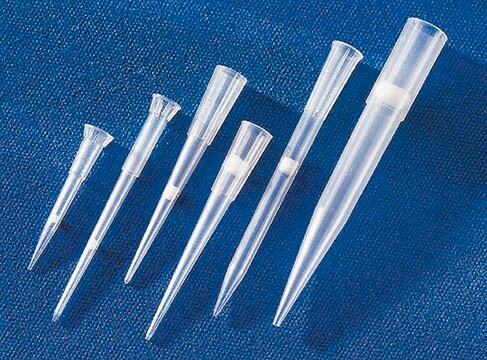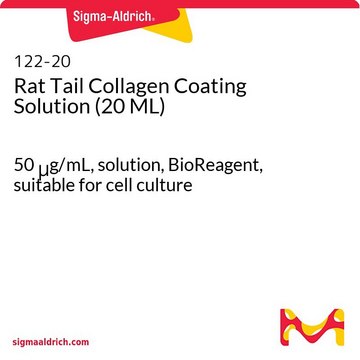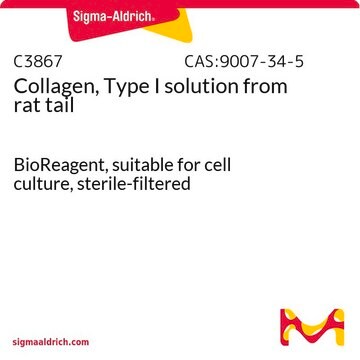About This Item
Kod UNSPSC:
12352207
NACRES:
NA.75
Polecane produkty
Formularz
liquid
Poziom jakości
okres trwałości
1 yr
Warunki transportu
dry ice
temp. przechowywania
−20°C
Opis ogólny
EHS Matrix Extract to rozpuszczony preparat błony podstawnej wyekstrahowany z mięsaka myszy Engelbreth-Holm-Swarm (EHS). Jego głównymi składnikami są laminina, kolagen typu IV, aktywator plaminogenu i inne czynniki wzrostu, które naturalnie występują w guzie EHS.
Zastosowanie
Ekstrakt z matrycy EHS szybko żeluje w temperaturze od 22°C do 37°C. Rozmrozić EHS Matrix Extract w temperaturze 4°C przez noc w lodówce. Podczas przygotowywania matrigelu należy używać wstępnie schłodzonych pipet, płytek i probówek. Zżelowany ekstrakt z matrycy EHS można upłynnić, umieszczając go na noc w lodówce w temperaturze 4°C.
Uwaga dotycząca przygotowania
Wyjąć z lodówki pożywkę odpowiednią dla komórek. Odkazić butelkę 70% alkoholem w sterylnym pomieszczeniu.
*Przechowywać EHS Matrix Extract na lodzie przez cały czas przygotowywania. Do przygotowywania EHS Matrix Extract należy używać schłodzonych końcówek do pipet, pipet, płytek hodowlanych i probówek.
Na przykład:
2,5 ml na każdą kolbę T-25 (1,25 ml pożywki hodowlanej na 1,25 ml EHS Matrix Extract)
210 μl na każdą studzienkę płytki 24-dołkowej (105 μL pożywki hodowlanej na 105 μL EHS Matrix Extract)
*Przechowywać EHS Matrix Extract na lodzie przez cały czas przygotowywania. Do przygotowywania EHS Matrix Extract należy używać schłodzonych końcówek do pipet, pipet, płytek hodowlanych i probówek.
- Rozmrozić EHS Matrix Extract w temperaturze 4°C przez noc na lodzie.
- Użyj schłodzonych końcówek pipet, wymieszaj EHS Matrix Extract na lodzie do uzyskania jednorodności.
- Przygotuj matrycę EHS Matrix Extract, dodając schłodzone podłoże hodowlane do EHS Matrix Extract na lodzie w stosunku 1:1.
- Równomiernie pokryć powierzchnię hodowli tkankowej.
Na przykład:
2,5 ml na każdą kolbę T-25 (1,25 ml pożywki hodowlanej na 1,25 ml EHS Matrix Extract)
210 μl na każdą studzienkę płytki 24-dołkowej (105 μL pożywki hodowlanej na 105 μL EHS Matrix Extract)
- Inkubować w temperaturze 37°C przez jedną godzinę.
- Przepłukać EHS Matrix Extract pożywką hodowlaną.
- Powierzchnia hodowli tkankowej pokryta EHS Matrix Extract jest teraz gotowa do użycia.
Ta strona może zawierać tekst przetłumaczony maszynowo.
Kod klasy składowania
10 - Combustible liquids
Klasa zagrożenia wodnego (WGK)
WGK 3
Temperatura zapłonu (°F)
Not applicable
Temperatura zapłonu (°C)
Not applicable
Wybierz jedną z najnowszych wersji:
Certyfikaty analizy (CoA)
Lot/Batch Number
It looks like we've run into a problem, but you can still download Certificates of Analysis from our Dokumenty section.
Proszę o kontakt, jeśli potrzebna jest pomoc Obsługa Klienta
Masz już ten produkt?
Dokumenty związane z niedawno zakupionymi produktami zostały zamieszczone w Bibliotece dokumentów.
Klienci oglądali również te produkty
Lital Livni et al.
Neuroscience letters, 694, 14-19 (2018-11-16)
Chemotherapy-induced peripheral neuropathy (CIPN) is a severe and debilitating adverse effect of cancer therapy that results from treatment with neurotoxic agents. Although chemotherapy treatment has been shown to inhibit neurite outgrowth from dorsal root ganglion (DRG) neurons in vitro, evidence
Zhen Yang et al.
Autophagy, 15(4), 668-685 (2018-11-06)
Emerging evidence has revealed that miRNAs could upregulate the expression levels of target genes. However, the molecular mechanism underlying upregulation of targets mediated by miRNAs remains unclear. In this study, we found a novel miRNA named MIR-G-1 by GRSF1-RNA immunoprecipitation
Richard Beatson et al.
Communications biology, 3(1), 644-644 (2020-11-06)
The tumour microenvironment plays a crucial role in the growth and progression of cancer, and the presence of tumour-associated macrophages (TAMs) is associated with poor prognosis. Recent studies have demonstrated that TAMs display transcriptomic, phenotypic, functional and geographical diversity. Here
Nasz zespół naukowców ma doświadczenie we wszystkich obszarach badań, w tym w naukach przyrodniczych, materiałoznawstwie, syntezie chemicznej, chromatografii, analityce i wielu innych dziedzinach.
Skontaktuj się z zespołem ds. pomocy technicznej